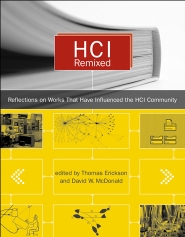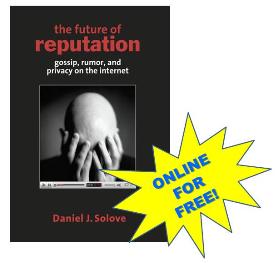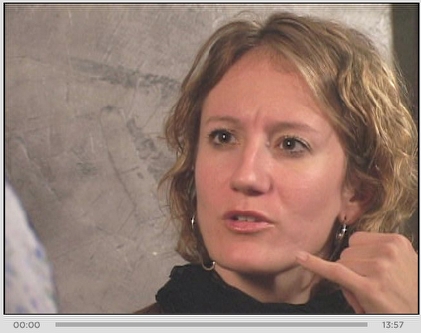I have exciting news. I’ve decided to join the advisory board of LiveJournal. It’s been brewing for a while, but it became official today. (Today seems to be the day for announcing things that have been brewing for a while…)
Anyone who has been following my work for a while knows that I heart LiveJournal with a passion. I’ve been on LJ in one form or another since 1999/2000 and it’s still the only community that I check in with daily for personal purposes. While I love LJ personally, I also deeply respect its history professionally. From its earliest years, LJ was home to many thriving subcultures: geeks, playa obsessed freaks, queers, goths, fans, camgirls, and even post-structural feminist cultural studies scholars. Because I’ve identified with or dated members of each of these subcultures, I’ve ended up back at LJ time and time again. Of course, LJ is much more than its subcultures. LJ is also home to teenagers, Russian activists, literary aficionados, knitters, and many many more. Like the community systems of the early web, LJ brings together communities around shared passions. Like contemporary social network sites, LJ serves as a hangout space for friends. Combined, LJ is one of the most powerful tools for people to gather, share, communicate, connect, and chill.
As much as I love LiveJournal, it has not been without drama. From the early days of camgirls to the fights between SixApart and fanfic folk, the various LJ communities have been active in defining what LJ should be about and what community identity looks like. The cultures that flourish inside LJ are vibrant, but often happily underground. Part of what makes LJ the ideal home for this is that LJ has some of the best tools for communicating and negotiating audience (think privacy features). When SixApart bought LJ back in 2005, I wrote a panicked essay called “Turmoil in Blogland” (published in Salon). I was worried that the well-intentioned folks at SixApart meant well, but didn’t understand what the cultures of LJ looked like. While they didn’t do that bad by LJ, their fights with the community over monetization and censorship showed that they were in over their heads. Not surprisingly, each incident incited a revolt by passionate LJers determined to stand up for what they believe. Each time, I couldn’t help grinning. I do love subcultural passion. At the same time, the last round of fanfic revolts saddened me. I understand why there are many who want to up and leave LJ, but I also feel as though much will be lost if they do. Given that LJ is not a psycho corporation and that I think most people on the inside wanna do what’s right, I kept wishing that LJ and its subcultural participants would find a way to resolve their issues.
Then, in December, I learned that SixApart was selling LiveJournal to the Russian company SUP. I have to admit that I panicked a bit. I knew that SUP had been pretty good to the Russian continent (having been running it for over a year), but I didn’t think they knew diddly squat about the communities that I loved dearly. I was also terrified of some logistics wrt the acquisition; Russia’s not exactly known for being a liberal nation state. Within days of the sale, one of the SUP founders (Andrew Paulson) contacted me. He had read my concerned blog post as well as my old essay on LJ. He asked if we could meet to discuss the future of LJ. He wanted to know if I had questions that he might be able to address and advice that might help in guiding the transition. We met and the one-hour meeting turned into four, at which point I had to bail out. Our conversation was intense. We debated some issues, educated each other on others. We found commonalities and talked about how we might resolve some of our disagreements. Above all, what struck me was that he was very willing to listen and open to ideas that would help LJ. We talked about how to handle different communities’ needs and how to make sure that activists, outcasts, and rabble rousers would feel safe. In the end, he asked if I would join the advisory board to help guide SUP and LJ in the right direction.
As the advisory board started coming together, I got even more excited. Brad Fitzpatrick, Esther Dyson, Lawrence Lessig… These are all people that I love and trust, that I feel confident will work to protect community interests. SUP has also decided that LiveJournal shall have two positions on the advisory board set aside for user representatives that will be elected by the community (more info on that coming later). To top things off, Jason Shellen will be leading the U.S. LJ product team. (Jason and I worked very closely together at Blogger/Google and I know that I can trust him to be community-minded.) In other words, lots of folks I respect and lots of opportunity for meaningful connections between users and the company.
The mandate of the LJ advisory board is as follows:
- An international group of informed and trusted thought leaders from the online community, who will advise the management and Board of Directors of LiveJournal Inc in the operation and development of the LiveJournal platform;
- Charged to meet, discuss, and post their position on the issues that are important to the community. The board will likely discuss a broad range of topics: freedom of speech, privacy, legality, policy, and security, to name only a few;
- Charged to provide guidance to LiveJournal, Inc. management and the Board of Directors on new issues and controversies as they arise;
- Charged to speak to and for the users, offering them a voice not only in LiveJournal, Inc., but also on LiveJournal’s role in the world;
- Charged to oversee ongoing charitable work which the LiveJournal, Inc. Board of Directors supports.
Personally, I wanted to join the advisory board to help bridge gaps between the communities and SUP/LJ (the company). With help from the various communities, I hope that I can represent the passionate users out there. While I want to be able to advise the company to do the right thing, I also know that there will be times when compromises are necessary. My hope is that I can also help the company find the best compromises possible as well as help folks understand how decisions were made. Transparency is critical. Personally, I’m looking forward to the challenge. I believe in LiveJournal, I believe in the users. I want to see LJ be a safe home for those who have inhabited it for so long. New landlords are always a bit daunting, but I do think that these new landlords are well-intentioned and I deeply respect that they’re wanting to connect to the tenants and bring people in to serve as liaisons.
As much as change is always a bit nerve wracking (especially when it comes to community sites), I’m actually looking forward to this transition. I think that SUP gets that fucking with the thriving communities that are living inside LJ is downright stupid. At the same time, I respect that they want to figure out how to grow LJ in ways that don’t negatively affect the current active population. There are lots of issues to be addressed and innovation to be done, but I think that this can be done in a fashion that is beneficial to all stakeholders (including and especially active users). Given the opportunity to help, I just had to say yes.
My private LJ is going to remain private, but I decided to make a new public LJ as well: http://danahboyd.livejournal.com I’m not sure what all I will use this for, but I will definitely post things relevant to LJ there and be open to communicating with anyone who wants to talk.
W00t!




